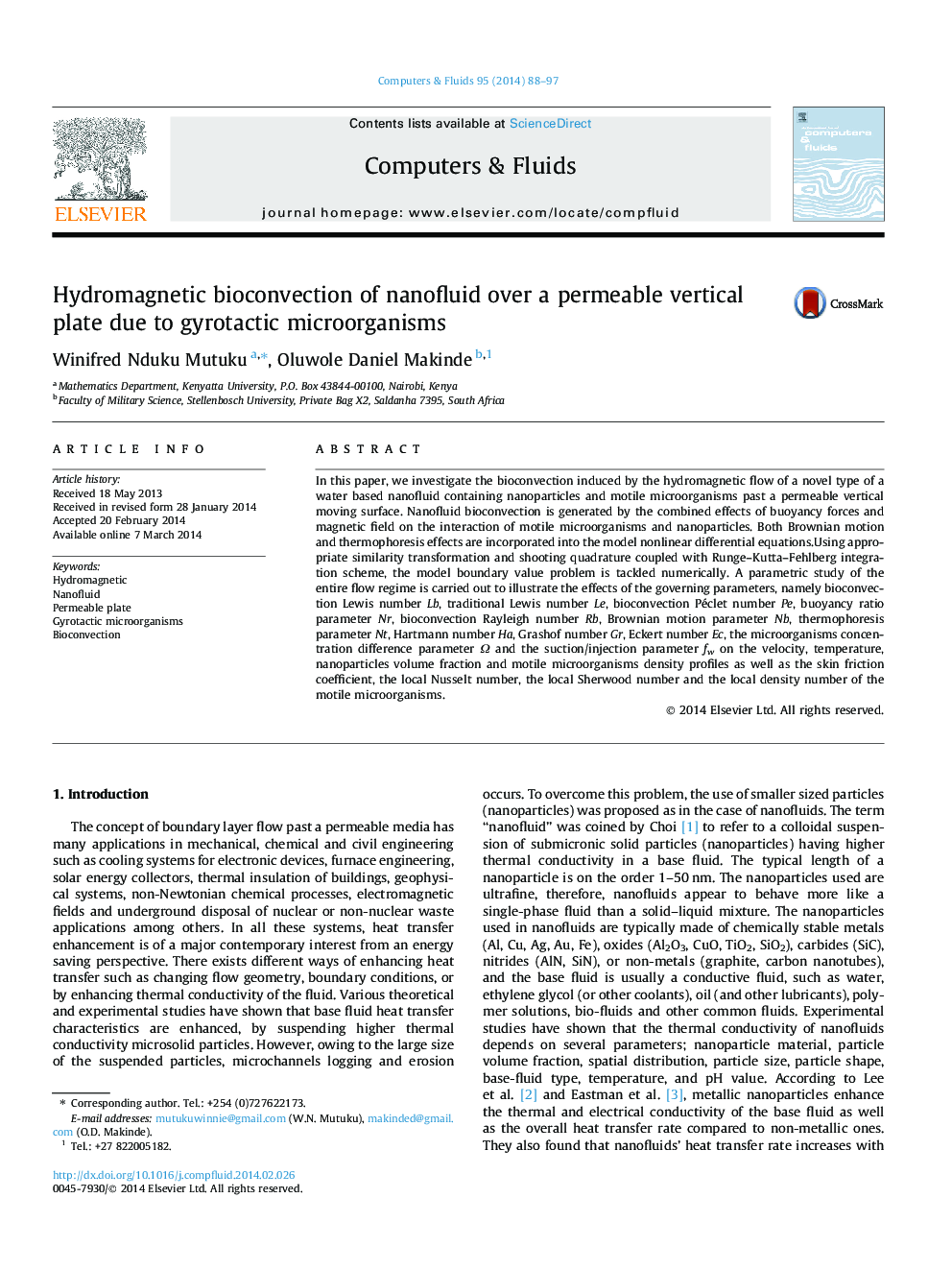| Article ID | Journal | Published Year | Pages | File Type |
|---|---|---|---|---|
| 768401 | Computers & Fluids | 2014 | 10 Pages |
•MHD bioconvection of a nanofluid due to gyrotactic microorganisms is investigated.•Shooting method with Runge–Kutta integration is used for the problem solution.•Effects of magnetic field, nanoparticles, buoyancy and bioconvection is analysed.•MHD nanofluid flow ensures more effective heat removal from thermal–fluid systems.•Motile microorganisms enhances mass transfer and nanofluid’s stability.
In this paper, we investigate the bioconvection induced by the hydromagnetic flow of a novel type of a water based nanofluid containing nanoparticles and motile microorganisms past a permeable vertical moving surface. Nanofluid bioconvection is generated by the combined effects of buoyancy forces and magnetic field on the interaction of motile microorganisms and nanoparticles. Both Brownian motion and thermophoresis effects are incorporated into the model nonlinear differential equations.Using appropriate similarity transformation and shooting quadrature coupled with Runge–Kutta–Fehlberg integration scheme, the model boundary value problem is tackled numerically. A parametric study of the entire flow regime is carried out to illustrate the effects of the governing parameters, namely bioconvection Lewis number Lb, traditional Lewis number Le, bioconvection Péclet number Pe, buoyancy ratio parameter Nr, bioconvection Rayleigh number Rb, Brownian motion parameter Nb, thermophoresis parameter Nt, Hartmann number Ha, Grashof number Gr, Eckert number Ec, the microorganisms concentration difference parameter Ω and the suction/injection parameter fw on the velocity, temperature, nanoparticles volume fraction and motile microorganisms density profiles as well as the skin friction coefficient, the local Nusselt number, the local Sherwood number and the local density number of the motile microorganisms.
